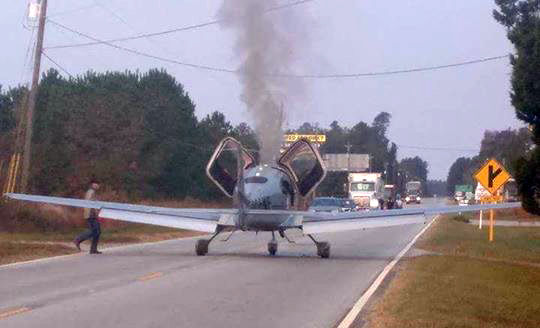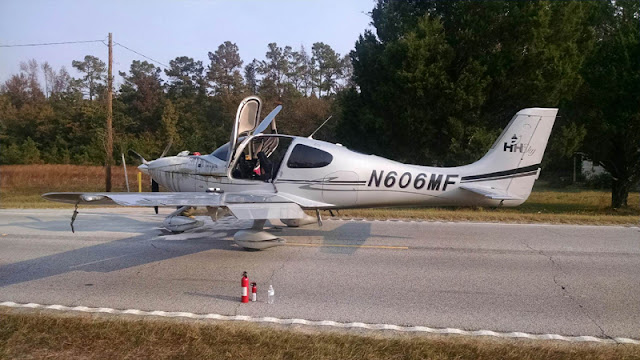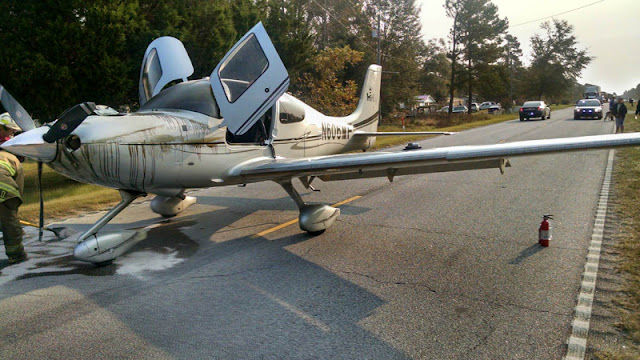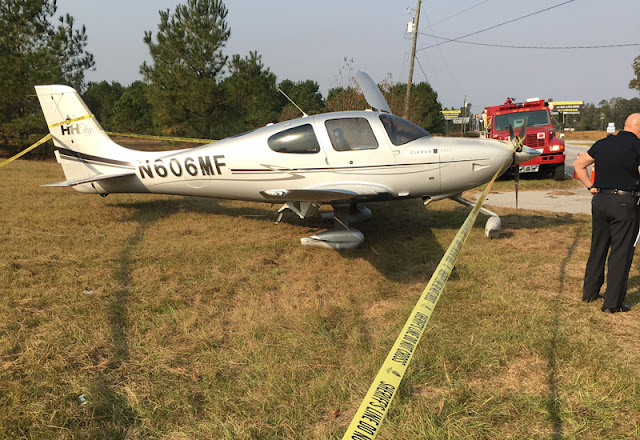mulligan
Cleared for Takeoff
****Reposted from another site*****
Cirrus SR22, N606MF: Incident occurred November 11, 2016 in Marion County, South Carolina




MARION, SC (WBTW) – A single-engine Cirrus plane flying over the Gresham community in Marion County was forced to make an emergency landing on Highway 378 around 8:30 a.m. Friday, according to county officials.
Marion County Emergency Management Services Director Joey Price confirms a fire ignited on board the plane, forcing the pilot to land unexpectedly. There were three occupants on board, but no injuries were reported during the emergency landing. Price says once the plane was on the ground, the pilot was able to put the fire out with an extinguisher.
The plane was traveling from Mt. Pleasant to Raleigh, NC. Price explained to News13 that the plane is pulled from the highway, allowing vehicles to travel past.
It’s unknown what caused the fire, but Price says more details will be made available once emergency crews have a chance to investigate. The Federal Aviation Administration has been contacted.
Cirrus SR22, N606MF: Incident occurred November 11, 2016 in Marion County, South Carolina




MARION, SC (WBTW) – A single-engine Cirrus plane flying over the Gresham community in Marion County was forced to make an emergency landing on Highway 378 around 8:30 a.m. Friday, according to county officials.
Marion County Emergency Management Services Director Joey Price confirms a fire ignited on board the plane, forcing the pilot to land unexpectedly. There were three occupants on board, but no injuries were reported during the emergency landing. Price says once the plane was on the ground, the pilot was able to put the fire out with an extinguisher.
The plane was traveling from Mt. Pleasant to Raleigh, NC. Price explained to News13 that the plane is pulled from the highway, allowing vehicles to travel past.
It’s unknown what caused the fire, but Price says more details will be made available once emergency crews have a chance to investigate. The Federal Aviation Administration has been contacted.




